How to make a fountain with your own hands?
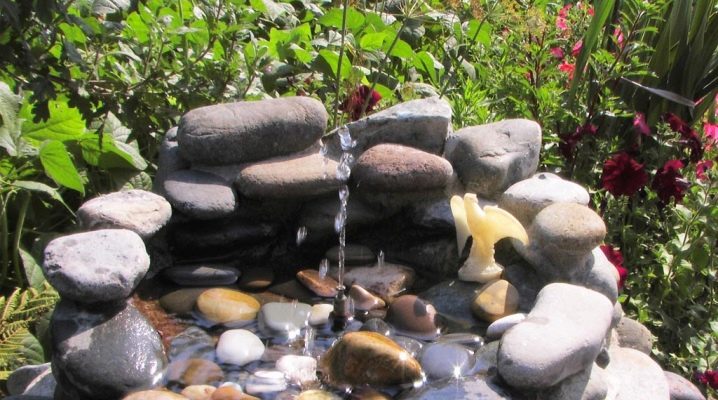
A rare summer resident does not seek to decorate his site. Flowerbeds, paths, fences - everything is decorated and improved. Reservoirs are one of the win-win options for ennobling space. Ponds and fountains are what always attracts attention and delights.
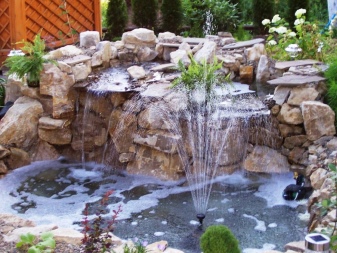
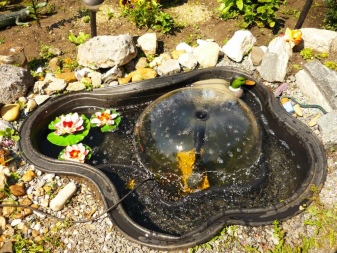
Seat selection
If there is no ready-made reservoir on the site, then you must first of all choose the right place for it. There are guidelines and rules for this.
- It is necessary that the fountain be in partial shade, then the water will not bloom under the influence of sunlight.
- Large trees should grow at some distance from the reservoir, since in the case of close growth, the waterproofing can be damaged by powerful roots. In addition, due to leaf fall, the contents of the fountain will become clogged with leaves and branches.
- If you choose an inkjet model, then you should not install it near your home. Splashes can damage the paint and plaster on the walls.
- It is undesirable to place the reservoir on an area with a slope. It is better to choose a lowland, then the air will be saturated with moisture, and the groundwater can be directed in the right direction.
- The place should be such that the fountain is perfectly visible from any point of the cottage. It's great if the water gurgles near the gazebo or recreation area.
Most fountains are powered by electricity, so there must be an outlet next to the reservoir.
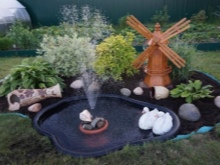
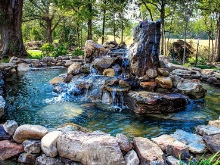
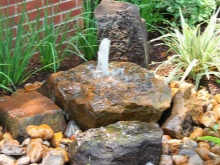
If not, you will have to start laying the cable, which will significantly increase both costs and the need for careful insulation of the wires.
What is needed to create?
Different fountains will require different materials and tools. If the plans include the construction of a small reservoir, then the bowl can be installed any suitable for this purpose. If there is a desire to do something more ambitious, then you will have to dig a foundation pit.
Besides, fountains differ in their design. They can be flowing and circulating. To install the first, you will need a well or water supply and a sewage system. Water will flow upward in a stream, after which it will fall down and go into the sewer. You can drink from such a fountain. To equip it, you need a small bowl and a pipe for supplying water.
As for the circulation models, the water in them moves in a circle. That's what capacity is for. Water is raised from it with a pump, sprayed with a special nozzle upward and sideways, after which the spray is again collected in the tank. In the case of such an arrangement, water does not need to be constantly supplied. It will have to be systematically replenished, since a certain part will be sprayed past the bowl or evaporate in the heat, but a complete replacement will not be required. To equip such a fountain, you will definitely need a pump, a bowl and a nozzle for spraying water.
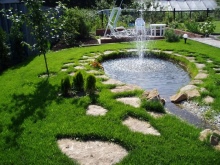

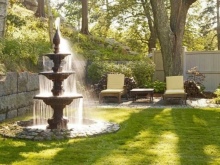
Fountains with a complex design most often decorate parks and squares, but sometimes they are also installed in summer cottages of a large area. The supply of water in such structures can come from a decorative element, for example, from the mouth of a fish or a jug of a girl. For the manufacture of statues that adorn the fountains, a special stone is used - polymer concrete. It is very durable, reliable and resistant to temperature extremes. The statues are lightweight and serve for a long time without losing their original qualities. They do not rot, are not susceptible to mold and mildew and do not deform. The manufacture of such fountains requires special knowledge, tools and experience in working with the material.


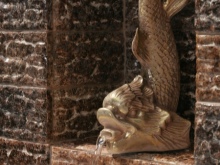
Therefore, it is better to contact firms that manufacture such structures.
Bowl preparation
When deciding to create a fountain yourself, you need to make the right choice of container for it. You can create it yourself.
If a large reservoir is planned, then it will require digging a pit. It is important not only to make the pit of the required depth, but also to remove from it everything that makes the surface heterogeneous - stones, roots, etc. The bottom of this pit must be equipped with a foundation so that the future structure is stable. The side walls are reinforced with brickwork. The next layer will be to tighten the bottom and walls with a polyethylene film so that water does not go into the ground. You can take the usual inexpensive film, but then the fountain will last a maximum of 2-3 years. There is a special film for swimming pools. If you use it to equip the bowl of the fountain, then the service life of the structure will be much longer. It should be noted that the price for this film is much higher than for ordinary one.
To make the seams sufficiently tight, they are treated with frost-resistant silicone. If the foundation is made of concrete, then a layer of film is not needed. However, a concrete base is the most costly, both in terms of time and money. In addition, it requires the equipment of a high-quality waterproofing layer.
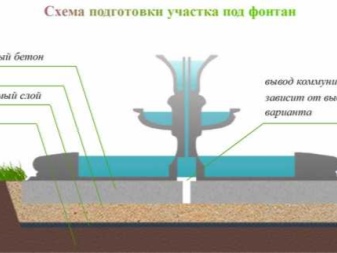
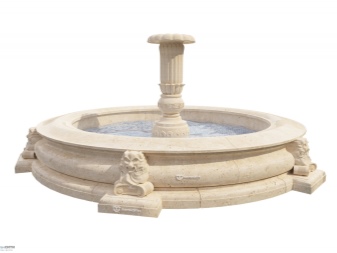
The base should be buried lower than the ground level passes. In this way, soil washout around the bowl can be avoided. It is best if there is a 10-12 cm high rim around the bowl. It is lined with stones or rubble. It is good to equip the fountain with an emergency drain so that the water does not rise above the required level.
You do not have to make a bowl out of the foundation and the film, but simply dig a pit and put a ready-made tank in it. But only if the fountain is not planned to be too deep in the ground. Whatever the material for making the bowl, the main requirement for it is strength and resistance to temperature extremes.
Once the bowl is ready, you can pour water into it. HNote that the lighter the tank has, the more often it will need to be cleaned.
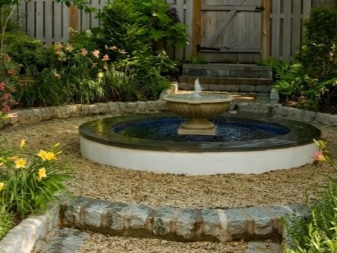

Any contamination is perfectly visible on white and other similar colors.
Arrangement of the fountain
After the bowl is prepared, you need to install the pump. Not every model is suitable for arranging a fountain. There are products in which filters are immediately built-in. They are more expensive, but much more convenient to use.
To install it at home, you will need to do the following:
- put in a bowl;
- securely fix, excluding the possibility of movement;
- to fill with water;
- carry out preparatory work (they are indicated in the operating manual);
- turn on.


The power of the pumps can be different. It depends on it how high the water jet will be. Sometimes nozzles are included with the pump, which can be changed, and thus the pressure and water supply can be adjusted.
The pump is powered from a 220 V electrical network. Some models are solar-powered. Each pump is made hermetically sealed, so a short circuit is excluded. But it is better if there is a residual current device (RCD).
Only submersible pump models are suitable for arranging the fountain.

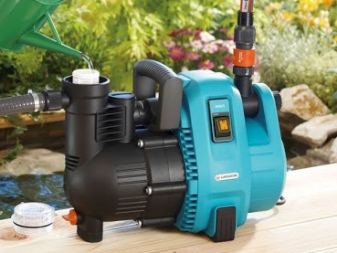
With a pond
In addition to the main components (pump and bowl), the fountain can be decorated with various additional elements. This includes:
- water sprayers;
- nozzles;
- water flow regulators.
Various combinations of the listed elements allow you to create stunningly beautiful effects. It is possible to move the fountain around its axis or supply water with varying degrees of intensity. Single nozzles can be installed around the perimeter, which will throw jets of water vertically or at an angle to the center. You can create tiered spraying by setting the water supply to different heights.
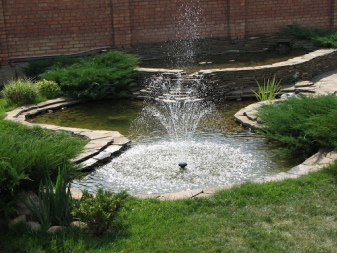

The original effect is the formation of bubbles in the bowl of water. This is due to the installation of the nozzle. Most often it is a geyser nozzle. Popular among summer residents and spray "fishtail". They are often installed in several, especially in large, deep bowls.
The backlight is the most original part. Water-resistant spotlights are perfect for this. There is also a waterproof LED strip in a variety of colors. By placing it along the perimeter of the bowl, you can achieve a stunning visual effect.
Recently, solar-powered batteries have become very popular. During the day, they accumulate it, and with the onset of dusk they are activated and participate in the backlight.
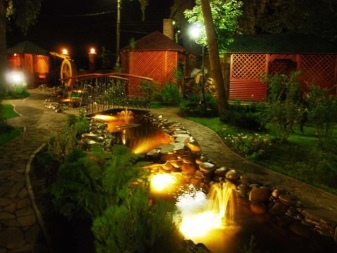
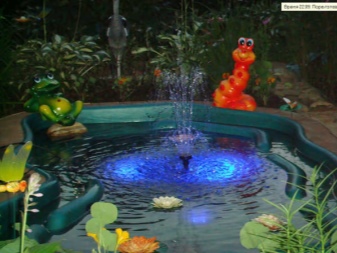
They can be installed in spotlights aimed at the fountain.
No pond
There are not so many fountains without a reservoir, since water must collect somewhere. A bowl (deep or shallow) works best for this. However, options located next to water supply and sewage systems do not require a pond. Water leaves them directly into the sewer. If tap water allows, you can drink from such a fountain.
A significant disadvantage of this modification is the high water consumption, because it is not going anywhere and does not circulate.
An interesting option for a garden fountain is the model with stones and pebbles. It requires a mini-pump (the cheapest and low-power can be used) and does not need a reservoir. You only need a capacious deep bowl or bucket, large stones, several bricks, a plastic pipe 20-30 cm higher than the capacity and a metal mesh, the size of a circle coinciding with the perimeter of the bowl. A sturdy wooden driftwood is suitable for decor.


At the bottom of the tank, you need to put a pump and connect a pipe to it so that it supplies water upward. Next, reinforce the bottom with bricks, setting them on a short edge, that is, also vertically. Put a metal mesh on top, bring the pipe to the wall of the container.
Lay stones on the surface of the grid and fix the snag with them (it should be on the same side from which the pipe is taken out).
Further, as discreetly as possible, you need to attach the hose to a piece of wood, giving it a shape resembling a tap. You can turn on the water. It will go into stones, collect in containers and pump out again.
There are a lot of options for such fountains, and most of them are extremely budgetary. They are made from car tires, sturdy clay flower pots, stone bowls, old aquariums, even enamel basins and trays. Receiving a new life, such items delight their owners for a long time.
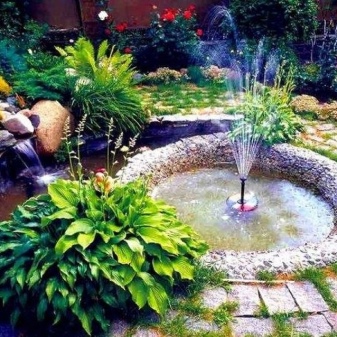
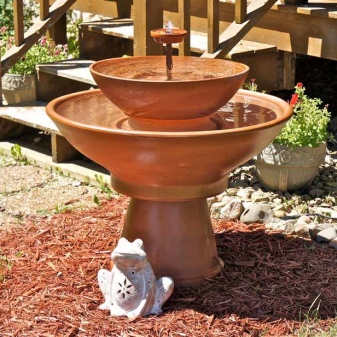
Indoor fountains in Asian style look incredibly elegant. The principle of its creation is almost identical to that described above, but water flows out of the "trunk" of bamboo, inside which a thin rubber or plastic hose is installed. The smaller and neater the container, the smaller the pebbles for decoration should be. If the size of the bowl allows, you can put a fishtail attachment on the pipe, then the water will not flow out, but spray beautifully. Low pump power will not allow the jet to hit too hard.
Several flower pots of different sizes will make a great cascading garden fountain. The container with the largest diameter becomes the bowl. The rest are installed in such a way that water from one pot flows down in a cascade into another. It is recommended to choose all the components of the composition in one shade so that the ensemble looks harmonious.
A hole is drilled in the bottom of one of the containers large enough to allow the hose to pass through. The principle of the device is the same - the pump is at the bottom, a pipe is attached to it. Bricks or large cobblestones fix the position of the pump, the mesh holds the structure itself. The first level is the "bowl" of the fountain, the second is a pot with a smaller diameter. The third level of the cascade is either a tank with a higher height, or two tanks stacked one on top of the other.
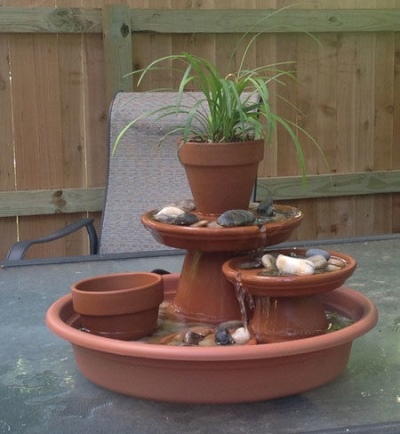
Water flows out from the third "floor" of the fountain, flows down to the second, and only then into a bowl decorated with stones or large multi-colored glass.
How to make a fountain with your own hands, see the video below.



































































The comment was sent successfully.